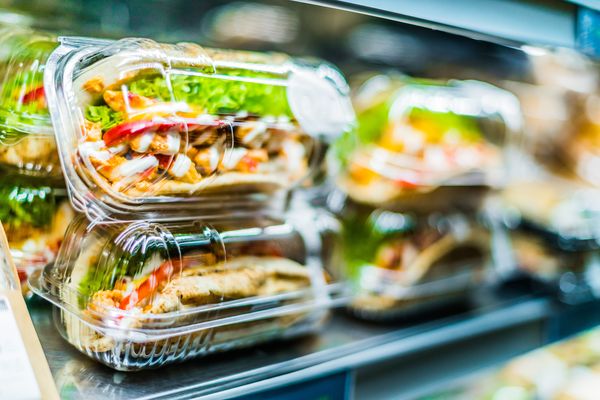Everyone loves the smell of freshly baked bread. So tempting that you want to cut a slice right away. But where does …

The fact that societies are constantly changing and evolving is a phenomenon that cannot be denied. In recent years in particular, these changes seem to have affected lifestyles and diets – especially in countries of the Western world. It seems that less and less time is spent on food preparation or is not available (anymore) at all. As a result, demand for quick and easy-to-prepare food is increasing, the food supply is changing, and new food trends are emerging. Two of these modern food trends will be discussed in more detail in the next two blog posts. Today’s post looks at the trend of convenience food. Another will have fast food as its theme.
The word convenience food (also convenience food) comes from the English language and is made up of the words convenience and food. Thus, this type of dietary trend involves “partially or fully prepared foods and meal components, up to and including ready-to-eat meals” [1]. These are intended to make work easier for the consumer.
If we look at the quality of products that are considered convenience food from a nutritional perspective, it can vary greatly. Frozen vegetables or fruits, for example, are just as beneficial to health as their fresh counterparts. Whole prepared meals, on the other hand, are of lower nutritional quality.
The biggest plus of convenience food is that it saves you time. Lengthy preparation and cooking are shortened with ready-to-cook, ready-to-cook or even ready-to-eat products. Seasonless, longer-lasting convenience food products can be consumed at any time (such as pre-processed canned or frozen foods). For people who cannot cook (whether due to illness, age, etc.), ready-made meals create the opportunity to still provide for themselves.
However, ready meals and similar convenience food products also bring disadvantages. They “often have high levels of nutritionally unfavorable ingredients, such as table salt [note: not iodized], sugar, fat, and saturated fatty acids.” [2] They are also often more expensive to purchase and ecologically energy-intensive to produce, store and prepare.
So, as we can see, convenience food brings both advantages and disadvantages, and it is not for nothing that it is considered one of the most widespread among modern food trends.
If you have any questions or comments, feel free to leave us a comment. Of course you can also send us an e-mail ( to j.fuschelberger@agrisan.at).
And if you now still want to know why so much bread ends up in the garbage, then we have
HERE exactly the right contribution for it >>
Elmadfa, Ibrahim & Claus Leitzmann. 2019. human nutrition. 6th, revised and updated edition. Stuttgart: Eugen Ulmer, pp. 755-757
https://www.duden.de/rechtschreibung/Convenience_Food
[1] Elmadfa, Ibrahim & Claus Leitzmann. 2019. Human nutrition. 6th, revised and updated edition. Stuttgart: Eugen Ulmer, p. 755
[2] Elmadfa, Ibrahim & Claus Leitzmann. 2019. Human nutrition. 6th, revised and updated edition. Stuttgart: Eugen Ulmer, p. 756
That was: Modern nutrition trends (1/2)
Everyone loves the smell of freshly baked bread. So tempting that you want to cut a slice right away. But where does …
What is the difference? White flour:When the bran, i.e. the marginal layers, and the valuable germ are removed from the grain, we …
Hello and greetings! Also in the life of a mouse it is important to be always up to date and well informed. …
When it comes to eating breakfast, each of us has our own habits, certain preferences or maybe even skips the morning meal …
Address:
Gasteigweg 25,
5400 Hallein
Austria
Opening hours:
Monday to Thursday: 09 – 16:00
Friday: 09 – 12:00
Contact:
Phone: +43 6245 83282
E-Mail:
info@agrisan.at



